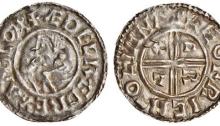Financial Crisis (1667) avoided by Charles II, via London Goldsmiths’ Loans
Background After a brief hiatus of experimentation with a pseudo-republican government under Oliver Cromwell, the English monarchy was reinstated in 1660 but Charles II began his reign with vastly reduced powers, especially in the realm of taxation – responsibility for which had been transferred to Parliament. This was a major restriction on Charles II and…









